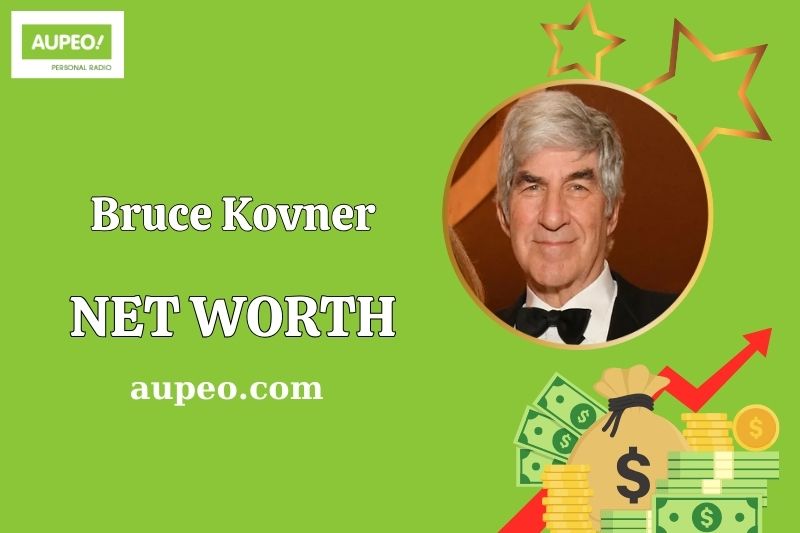Bruce Kovner is one of the most successful managers of the hedge fund in history. He founded Caxton Associates, a hedge wall -known global macro trading strategies and was later founded for managing Cam Capital’s personal investment.
With the experience of decades in finance, the disciplined risk management and market analysis of Kovner made it a legendary figure in investment circles.
Beyond finances, it is also the main charity, supporting education and art. His contribution to institutions such as the Juillard School emphasizes his devotion to cultural and educational development.
In this article he is investigating Bruce Kovner’s sacred is worthHis financial strategies and how he built his fate.
Bruce Kovner Fast Facts
| Fact | Detail |
|---|---|
| The real name | Bruce Stanley Kovler |
| A popular name | Bruce Kovner |
| Date of birth | April 25, 1946 |
| Age | 78 (as of March 17, 2025) |
| Birthplace | Brooklyn, New York, USA |
| Nationality | American |
| Ethnicity | Jewish |
| Education | Harvard University, Juillard School, Harvard College, Van Nouis High School |
| Marital status | Married |
| Wife | Suzi Frachild (M. 2007), Sarah Peter (M. 1973-1998) |
| Children | Three, including Rachel Kovler |
| Introduction | N/a |
| Brothers | Three |
| Parents | Isidore Kovner, Sophie Kovler |
| Height | N/a |
| The sacred is worth | $ 8.6 billion |
| Source of wealth | Hedge -Jumps, Investments |
What is the net value of Bruce Coven in 2025?

As of 2025, Bruce Kovner’s net value is estimated at $ 8.6 billion. His fate mainly comes from the hedge fund management, especially through the Caxton Associates, which he founded in 1983.
For almost three decades, the firm has turned into one of the most successful global macro hedge fonds in the world.
His wealth puts him among the most financially successful investors, along with other hedge phon titans, such as George Soros and Paul Tudor Jones. Unlike billionaire investors, Kovner retained a low public profile after retirement in 2011.
Related to financial figures
- Caxton associates
- The camera’s capital
- Juillard School
- The Institute of American Enterprise
- Goldman Sachs
- Charter Schools of the Academy of Success
- Paul Tudor Jones
- Julian Robertson
- Ray drink
- David TEFER
Kovner’s financial position also positions it between it The most influential billionaires in financeWith other investment legends. Check out the other financial powers that create today’s markets.
Bruce Kovner’s wealth, salary and financial review

How did he build his wealth?
Bruce Kovner’s financial trip began in 1977 with a $ 3,000 credit card loan, which he invested in soy futures. His first trade turned into $ 40,000 before returning to $ 23,000 and taught him a substantial lesson in risk management.
He later joined the Commodities Corporation, where he worked under Michael Marcus, studying with advanced trading techniques. In 1983, he founded Caxton Associates, which became one of the most successful hedge wallpapers that peaked up to $ 14 billion.
What are the key factors beyond his financial success?
Kovner’s wealth has increased due to several basic principles:
- Global Macro Trade: Investing on the basis of macroeconomic trends.
- Risk Management: Strictly controls the loss to protect capital.
- Long -term vision: Avoid short -term speculation and focus on sustainable pay.
- Ordered decision making: Using data -focused strategies rather than emotional reactions.
These methods have contributed to Caxton Associates with 21% average annual reimbursement in 28 years.
How did his hedge -fondo make high pay?
Caxton is associated with global macro trade with the analysis of economic trends in currency, interest rates and goods. Several major strategies include:
- Forex and interest rate arbitration
- Government Bonds Transactions
- Commodity investments
- Stock Exchange Index Positions
By focusing on large -scale global economic shifts, Kovler has capitalized on the main financial trends, and while alleviating risks through strategic hedges.
What role does Cam capital play in its financial portfolio?
After retirement from Caxton Associates in 2011, the Kover founded Cam Capital in 2012. Unlike Caxton, which managed external client joints, Cam Capital focuses exclusively on his personal investment management.
The firm is investing:
- Private capital
- Hedge -joints
- The capital of the enterprise
- Real estate
How does it allocate its wealth?
Kovner’s wealth is distributed in many sectors:
- Financial Markets: Investments in hedge, stocks and goods.
- Real Estate: High level properties in New York, Florida and California.
- Charity: The main contribution to education and art.
Her real estate owns 22 hectares of oceans in Carpinester, California, part of which was sold to Ellen Degenerate and Portia de Ross for $ 70 million.
What is the effect of its financial industry?
Kovner’s influence on finances goes beyond his personal fate. It has:
- Formation of global macro trade through its strategies.
- Mentorial top investors, including those who later ruled the main hedge funds.
- Contributed to financial policy discussions through the Institute of American Enterprise.
His legacy continues to influence traders and investors around the world.
What is his charity and educational contribution?
Kovler donated millions Juillard SchoolWhere he is chairman. His contributions include:
- $ 60 million to establish a Kovner Scholarship Program.
- US $ 20 million to support historic music.
- A valuable collection of music manuscripts donated in 2006.
Beyond the art, he supported conservative thinking tanks, such as the Institute of American Enterprise and educational initiatives, such as the Schools of the Charter of the Academy of Success.
Conclusion
Bruce Kovner’s financial success is built on orderly trade, risk management and strategic investment. Although he has escaped hedge -fundamental management, his influence remains strong in both finance and charity.
Want to study more billionaire success stories? Visit Aupeo’s in -depth financial discretion.
